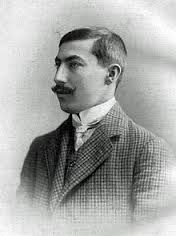
Losing Twice in One Game: A study in the Scandinavian Defense
I lost this Scandinavian Defense game twice: once in the opening, and again in the middlegame. If we had made it to an endgame, I'm sure I would have lost it a third time, alas I was spared that horror.
I mentioned in an earlier blog that I was adding the Scandinavian Defense to my repertoire for a whole slew of reasons. I am still happy with that decision; however, I am experiencing growing pains as I learn typical plans and patterns.
One of the reasons I was attracted to the opening was because of the pawn structure: a Caro-Slav formation. I've read Andy Solits's Pawn Structure Chess, I've seen Danny's Pawn Structure 101. So I figure I know what to do... just play c5 (or maybe e5) and all will be right in the world. It turns out, its no so simple as that. What if white plays d3 instead of d4?
Jovanka Houska has this to say about d3: “This is a vicious little weapon which Eric Prié has named the "Short System" after the English grandmaster Nigel Short.”
So whats the big idea of the “Short pawn”? I'll quote Houska again:
-
“The d3-pawn blunts the power of the Scandinavian bishop and limits Black's counterplay on the d-file. This feature gives White's kingside pawn push added venom, as the bishop can no longer use the e4- and c2-squares. Black players should be aware that moves like d2-d3 and h2-h3 are not passive, cautious moves but may be a prelude for a vicious kingside attack.
-
The d4-square is now available for a white knight to use, which could make Black vulnerable to piece sacrifices on e6. White still retains the option of playing Bd2 followed by Nd5 or Ne4, trying to secure a favourable exchange of pieces; and the e5-square can still be used as a base for White's attack.”
In today's game, I fall victim to both issues... though luckily my opponent didn't take advantage of his chance to sacrifice on e6. Let's have a look at the game. Please note that all notes are from before I looked up this line so they views are untainted.
Defeat of the Day
As usual, you can watch the game on YouTube with live commentary and read my analysis after the game to get a full picture of my thoughts about the position.
And now for the post game analysis:
Going back to Houska, she outlines the remedy to the Short System:
1.) Black mustn't retreat the queen unless absolutely necessary.
